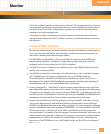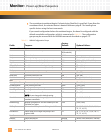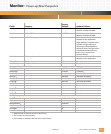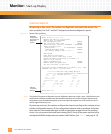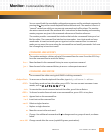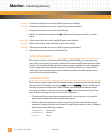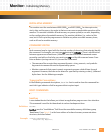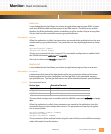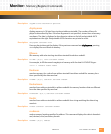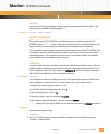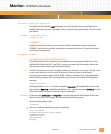
Monitor: Boot Commands
10002367-02 PmT1 and PmE1 User’s Manual
8-9
bootrom
is an autoboot device that allows you to boot an application program from ROM. It copies
code from ROM into RAM and then jumps to the RAM address. The ROM source address
RomBase, the RAM destination address LoadAddress, and the number of bytes to copy Rom-
Size are read from the nonvolatile memory group BootParams.
Description:
bootrom
When the application is called, two parameters are passed to the application from the non-
volatile memory group BootParams. The parameters are seen by the application as shown
below:
Application(Device, Number)
unsigned char Device, Number;
There are no arguments for this command. The nonvolatile configuration is modified with
the NVRAM commands nvdisplay and nvupdate.
Also refer to the function BootUp on page 8-37.
bootserial
is an autoboot device that allows you to boot an application program from a serial port.
Description:
bootserial
It determines the format of the download and the entry execution address of the down-
loaded application from the LoadAddress and DevType fields in the nonvolatile memory
group BootParams. The DevType field selects one of the download formats specified below:
Table 8-2: Device Download Format
The nonvolatile configuration is modified with the NVRAM commands nvdisplay and nvup-
date.
When the application is called, three parameters are passed to the application from the
nonvolatile memory boot configuration section. The parameters are seen by the applica-
tion as shown below:
Application(Number, RomSize, RomBase)
unsigned char Number;
unsigned long RomSize, RomBase;
These parameters allow multiple boards using the same facility to receive different configu-
ration information from the monitor.
Device Type: Download Format:
INT_MCS86 0 Intel MCS-86 Hexadecimal Format
MOT_EXORMAT 1 Motorola Exormax Format (S0-S3,S7-S9 Records)
HK_BINARY 2 Emerson Binary Format



